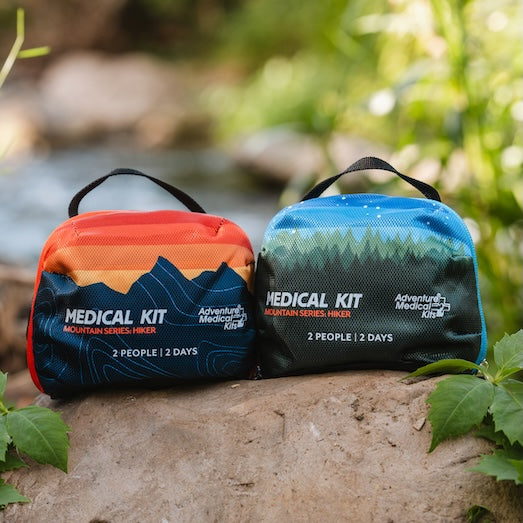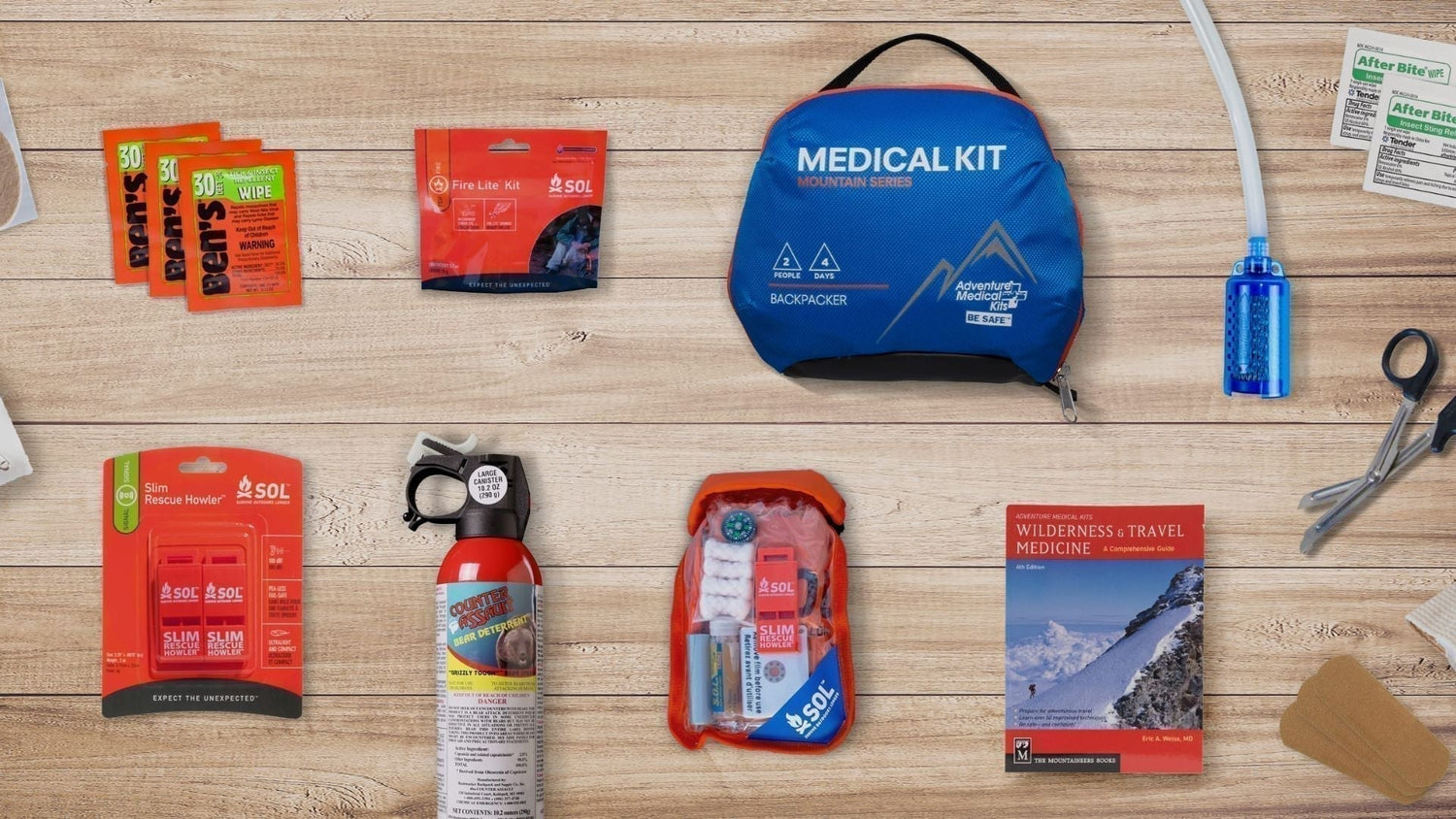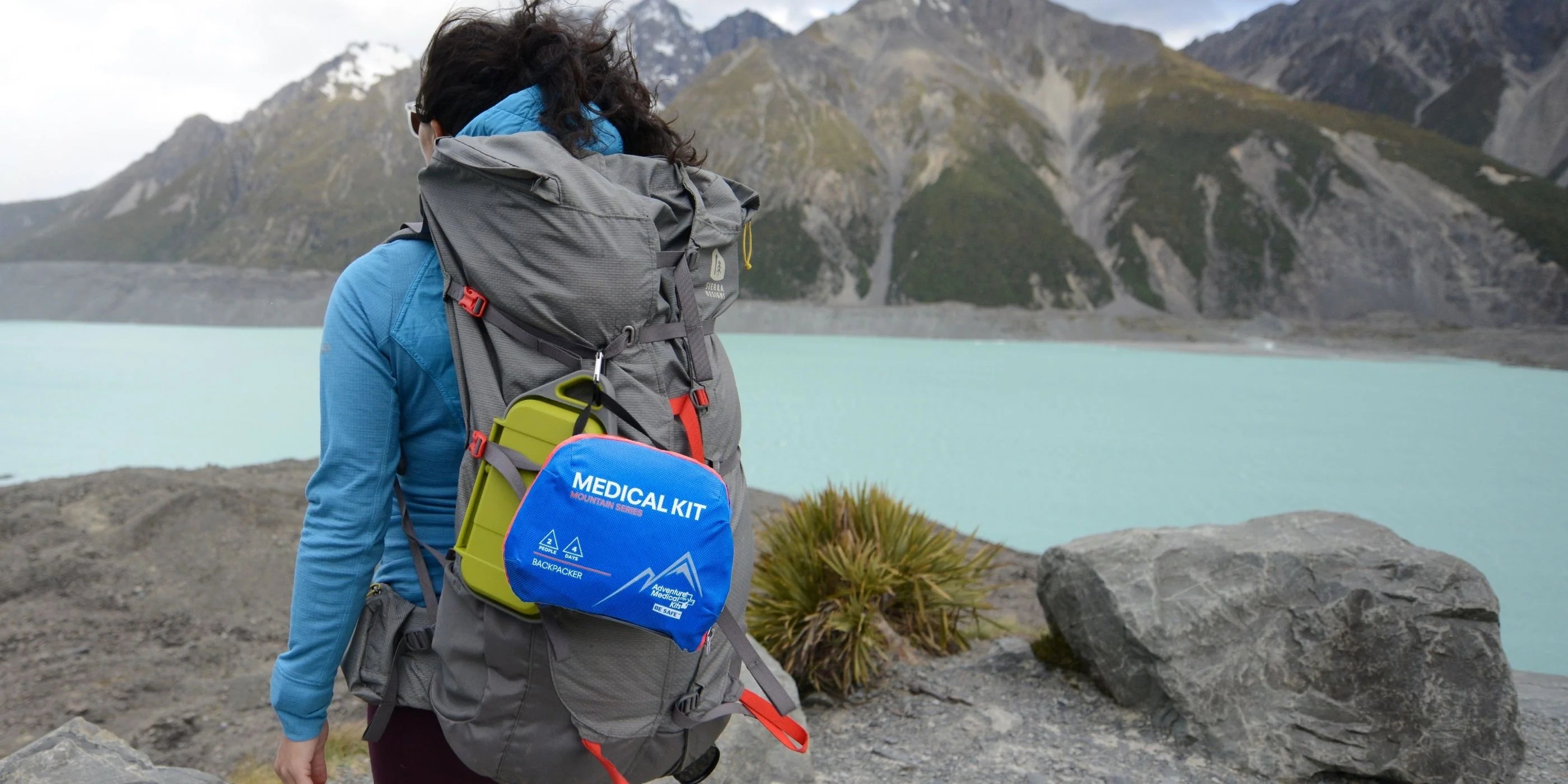Summer adventures call us to trails, lakes, and mountains, but the season brings unique safety challenges that require proper preparation. Navigating summer-specific hazards such as intense heat, sudden storms, and increased wildlife activity is made easier with our Ten Essentials checklist.
Whether you’re packing the Ten Essentials for the first time, or you’ve been carrying them for years, preparation is more than just gear—it’s about knowing how to use it. That’s why this summer, Adventure Ready Brands is proud to partner with NOLS (National Outdoor Leadership School), an organization dedicated to outdoor education and wilderness medicine. Together, we recognize that having the right equipment is only part of the equation—training and knowledge are just as essential for staying safe in the backcountry.
With warm weather finally here, many of us are eager to hit the trails, set up camp, and explore. But before you head out, now is the perfect time to check your gear, refresh your skills, and make sure you’re fully prepared for whatever the wilderness throws your way.
#1 Navigation
Map and compass, altimeter, GPS device, personal locator beacon, satellite messenger – in today’s high-tech world there are plenty of navigation options to pack in case you get lost. Our advice? Pack two types of navigation and make sure one of them doesn’t need to be charged. Survival kits like the SOL Scout come with button compasses that are lightweight backups.
Whatever your chosen means of navigation, practice using it until it’s second nature to you. When you’re lost and struggling to keep it together, you don’t want to be struggling to remember what “red in the shed” means.
Having a compass in your pocket helps you find your cardinal directions, but unless you know where you are, it’s useless. Study an aerial map before you go! Have a rough idea of where you’ll be and which directions you might take in case of emergency or if you lose the trail.
#2 Lighting
You might have all ten essentials in your bag – but can you find and use them in the dark? Solar lanterns are a great option for longer trips – ensuring you’ve got coverage whether or not you remembered to pack spare batteries.

#3 Protection
Traditionally this portion of the 10 essentials refers to sun protection, but we like to expand this to include protection from wildlife as well. Think of this essential as items that protect you from needing to use your first aid supplies (see #4).
Sun Protection
You might think a tan sounds great, but save it for the beach. When you’re in the backcountry, sun burns (or worse sun poisoning) are a risk that’s not worth taking, so pack and wear plenty of sunscreen, grab a hat, and consider protective clothing. Remember that as you go up in elevation, those sun rays get stronger and stronger, so you can burn faster and worse than at lower elevations.
Bug Protection
We can’t stress this one enough. Not only will bug bites leave you itching and welt-covered, but with insect-borne diseases on the rise, they can have serious, long-term health consequences. Lyme disease, EEE virus, West Nile virus, and more are transmitted by ticks and mosquitoes – for all these diseases, the best treatment (and sometimes the only treatment) is prevention.
Not all repellents offer equal protection either – look for bug sprays that use active ingredients that are CDC-recommended for repelling disease-carrying insects and are registered with the EPA, which means they’ve undergone extensive testing to prove their effectiveness. Be careful to check how long the repellent is effective (aka hours of efficacy) and reapply accordingly. If you’re not going to remember to reapply, be especially picky about choosing a long-lasting repellent.
Consumer Reports conducts extensive testing of a variety of bug spray brands and ingredients every year that can help you choose the right repellent for you. This year, Ben’s 30 bug sprays earned top ratings, with recommendations for both the wipes and continuous spray.
Although Consumer Reports emphasizes that DEET repellents (like Ben’s) consistently perform the best in their testing, if you’re looking for a DEET-free bug repellent, they recommend Natrapel as an effective alternative, both the picaridin and lemon eucalyptus formulas.
Bear Protection
This time of year, bears are waking up across the country. The vast majority of the time, a bear wants to avoid you as much as you want to avoid it, but following bear safety best practices can help prevent an unwanted encounter. Carry bear spray on your person at all times and know how to use it properly. Counter Assault bear deterrent is the farthest-reaching bear spray on the market, reaching up to 40 feet.
#4 First Aid
Pack a first aid kit and know how to use what’s inside! Sprained ankles, blisters, and cuts are all common outdoor injuries an outdoor medical kit should be equipped to treat. Our Mountain Series medical kits are specifically tailored to treat on-the-trail injuries. If you spend more time around water, expect rain, or are especially weight-conscious, the Ultralight/Watertight Series combines super lightweight and waterproof benefits. When picking a kit, consider how long you’re heading out for and how many people are going with you – we provide guidelines for this on the front of our kits.

When it comes to knowing how to administer first aid, we highly recommend taking a wilderness first aid course as part of your 10 essentials prep. Our new outdoor education partner, NOLS offers excellent courses. The WFA course can be done in a weekend and equips you with basic skills you won’t regret gaining. Our Mountain Series medical kits all come with wilderness first aid guides with helpful tips and treatment advice to help you identify and treat a range of injuries and illnesses, so make sure to familiarize yourself with the contents.
#5 Tools
At the minimum, we recommend packing a knife, gear repair items, and a signaling device – these tools can go a long way towards getting you out of a bind in the backcountry.
As with everything on this list, you should adjust based on your specific trip and needs, but a basic starting place for gear repair items includes duct tape (check out these ultralight mini rolls) and safety pins. Signaling devices help rescuers find you and come in a variety of options including survival whistles and signal mirrors.
#6 Fire
Fires provide warmth, light, and the ability to boil water and cook food – and that’s not to mention the psychological benefit of sitting next to a cozy blaze. Always carry a fire starter that you’re comfortable using and make sure to periodically practice your fire building skills.
The best emergency fire starters are waterproof, ignite quickly and easily, and have a long burn time that gives you plenty of time to add kindling and build your fire. This Fire Lite Kit contains waterproof kindling and a dependable striker, while adding less than an ounce of weight to your 10 essentials kit.

#7 Shelter
A good emergency shelter provides protection from the elements – wind, rain, snow, and cold. Avoid the mistake of thinking that on multi-day trips your tent counts as your emergency shelter – that’s only true if you have it with you at all times. If you’re taking day trips away from your camp site and leaving your tent behind, you’ll need another form of shelter.
We recommend packing a heat reflective emergency blanket or bivvy. Survive Outdoors Longer shelters are waterproof, windproof, and 90% heat reflective to help preserve precious body heat. Plus, they have a track record of saving lives.
#8 Extra Food
How much extra food you should carry as part of your 10 essentials depends how far and for how long you’re going into the backcountry. In general, pick food items that have a long shelf life and require no cooking. There are a bunch of great options for pre-made, ultralight freeze dried meals, or you can try making your own. Carrying a survival kit like the Scout that includes an emergency fishing kit definitely won’t hurt.
#9 Extra Water
Staying hydrated is key to backcountry safety. Make sure you’re carrying more than enough water for your chosen activity and also pack a way to purify water if you run out and need to rely on backcountry sources. Boiling water is effective but time consuming (you have to build the fire, boil the water, then let it cool before drinking).
The RapidPure purifier system removes 99.99% of viruses, bacteria, and parasites, making it the perfect emergency water purifier to keep at the bottom of your bag.
#10 Extra Clothes
The weather can change unexpectedly, especially in the mountains, so when you pack your bag think about what clothing you would need to survive outdoors if you were stranded, unable to move for an extended period of time. Think in layers – water-wicking base, insulation, and rain gear to name a few.
Remember: the weather at the top of a mountain can be completely different from the weather at the bottom, especially in the spring. The snow may have been gone from your home for weeks, but that doesn’t stop there from being four feet of snow and plenty of ice halfway up the trail you’re taking. Add in some summit wind chill, and you’ll be appreciating those extra layers!
Summer Safety Tips from Our Experts
Now that you're equipped with the essential gear and knowledge, let's enhance your summer safety toolkit with additional expert tips. We asked our colleagues and outdoor enthusiasts about what they do when they’re out and about in the summer. Here are ten valuable tips to add to our checklist.
-
We recommend practicing heat acclimation before strenuous summer adventures. Spend time gradually adjusting to the heat. Begin with short outings in the cooler parts of the day, then gradually increase the duration and intensity as your body adjusts to higher temperatures.
-
Stay on guard when it comes to heat-related conditions in yourself and your companions by knowing the signs of heat illness. If you or someone in your group experience confusion, dizziness, headache, nausea, and cessation of sweating, take immediate action to move to shade, cool the body, and hydrate.
-
In extreme heat, know how to rapidly lower body temperature. Keeping a bandana that can be washed and placed on pulse points, knowing nearby water sources, and learning improvised cooling techniques could all be life-saving during a heat emergency.
-
Always use the "swim with a friend" rule when enjoying lakes, rivers, or ocean environments. Make sure to assign a water watcher when children are present, and be aware that even strong swimmers may experience cramping or exhaustion.
-
In mountain environments, summer thunderstorms develop quickly. Stay off ridgelines and summits when storms threaten and avoid being the tallest object in open areas. Remember the 30/30 rule: if thunder follows lightning within less than 30 seconds, seek shelter for at least 30 minutes after the last thunder.
-
Before building that campfire, verify the current fire restrictions for your area.
-
Summer activities frequently lead us to remote locations where cell service is limited. Set clear expectations with someone at home about check-in times and what actions they should take if they don't hear from you, including who to call and what information to provide about your planned route and timeline.
When it comes to summer adventures, being prepared means having the right safety gear and knowing how to use it when it matters most. The Ten Essentials provide a solid foundation, while our summer-specific safety tips address seasonal challenges you might encounter. With proper preparation and knowledge, you can confidently explore mountains, lakes, and forests while minimizing potential risks. Safety does not diminish adventure, but rather enhances your ability to fully enjoy the outdoor experiences that make summer special.













